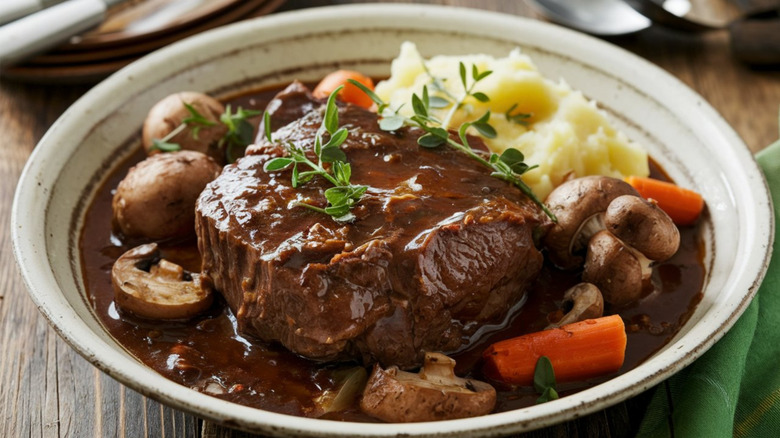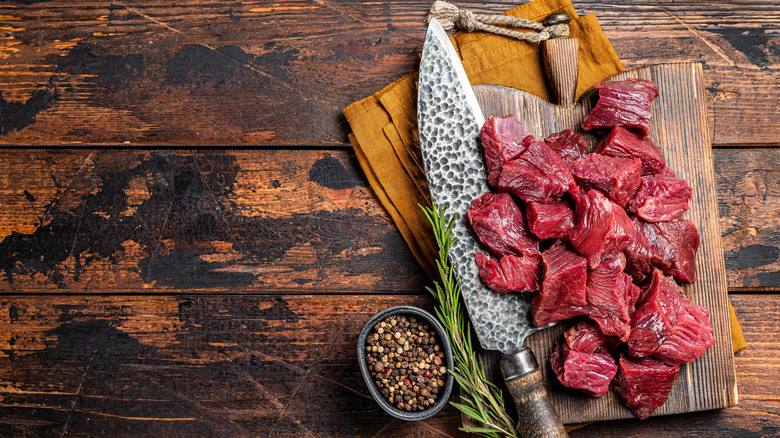The Best Cut Of Steak For Your Next Bowl Of Stew
Sirloin, porterhouse, ribeye, skirt steak — that doesn't even cover all the different cuts of meat you will find from one cow. Each cut has its distinct texture and flavor that depends on things like the cut's fat content and the amount of muscle the animal uses.
That is why tenderloin, a muscle that does not get much of a workout, hence being so ... ahem ... tender, is much more delicious and valuable than a beef shank taken from the leg, which is worked out often from walking.
Because of these different flavors and textures, each cut of meat also has its own most suitable cooking method. A filet mignon cut from the end of the tenderloin is great when seared hot and fast in a skillet, but a steak from the aforementioned shank would be tough to eat.
Nothing hits like a big bowl of comforting beef stew at the height of chilly winter weather, but using the wrong cut of beef could leave you with dry and stringy meat from the low and slow method of braising stews. When making stew at home, you want to look for chuck, shank, oxtail, and short rib cuts.
Tough cuts make tender stew
Tough cuts of beef typically utilize the animal's most utilized muscles, making them lean and strong. These cuts include beef chuck from the shoulder, shank from the rear, and short ribs from the chest and breast area. Some more health-conscious cooks might hear these cuts are leaner and want to fry them up for dinner, but the heavy musculature of these cuts makes them tough and chewy when cooked in dry heat methods like roasting, grilling, or pan frying.
These cuts of meat do best in a low and slow method like a braise in which the combination of time and hot liquid has time to break down the muscle fibers. If you were to braise a more tender cut like the tenderloin, you could end up with an overly soft or even mushy piece of beef. Since these tender cuts are also more expensive than economic, tough cuts, it would also be a major waste of money to lose all that texture and flavor to an inappropriate cooking method.
Any of the above cuts of meat would be great in a stew situation. I like to start my beef stew by coating chunks of beef in seasoned flour before browning them on all sides in a hot pot. After removing the beef, you can sautee aromatics like onions, carrots, and celery before returning the beef to the pot and covering it with a liquid like beef broth and a splash of red wine for a French boeuf bourguignon vibe. Let it cook in a low oven, around 325 degrees, for three to four hours, although you can do the same thing in a slow cooker as well.
And don't worry about memorizing every cut of beef made for stewing. You can often find already prepared cuts of beef labeled simply as stew meat pre-packaged in your grocery store's meat section.

